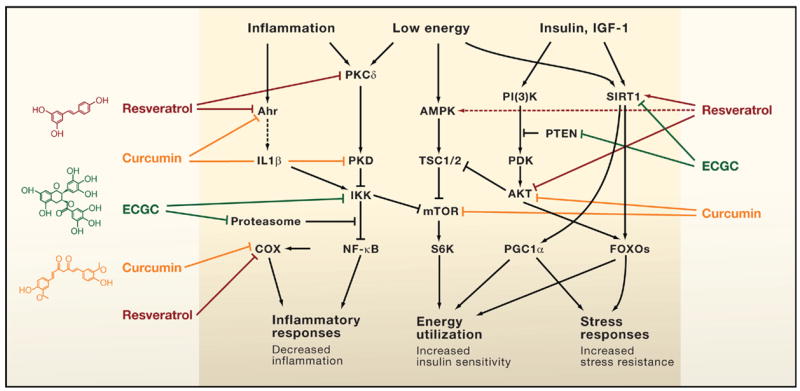The Concept of Xenohormesis.
Xenohormesis is the concept that different species such as plants and animals have common stress signaling molecules, and that such molecules can be harvested from plants and used to increase stress adaptation pathways in animals(ref)(ref)(ref). Plants cannot run away from predators, parasites, infectious agents, hot weather, or cold weather. For this reason, plants have evolved a large number of molecular stress coping pathways that are activated by compounds that are actively synthesized in response to the stressor. Some of these compounds ward off predators with bitter tasting compounds. Others ward off potential organisms that would eat the plant by synthesizing poisons that would kill the predator (i.e. natural pesticides). Although there are many toxic compounds in this arsenal of phytochemicals, there is a large family of molecules called polyphenols that are non-toxic and appear to have great benefits in humans. Approximately 14,000 of these plant-based stress-signaler polyphenol compounds have been discovered so far in plants. They are found in the leaves, stems, flowers, seeds, fruits, nuts, and shells surrounding the nuts. These plant polyphenols appear to be xenohormetic compounds in that they also upregulate stress coping pathways in mammalian cells. These xenohormetic compounds appear to prevent aging and cancer through a large number of pathways. For this reason, their mechanism of action is multifactorial or pleiotropic. Xenohormetic compounds include resveratrol, curcumin, EGCG, isothiocyanates, secoiridoids, genistein, gallic acid, lycopene, allyl mercaptan, plumbagin, etc. Multiple plant polyphenols and their mechanisms of action have been reviewed in past entries in this blog.




